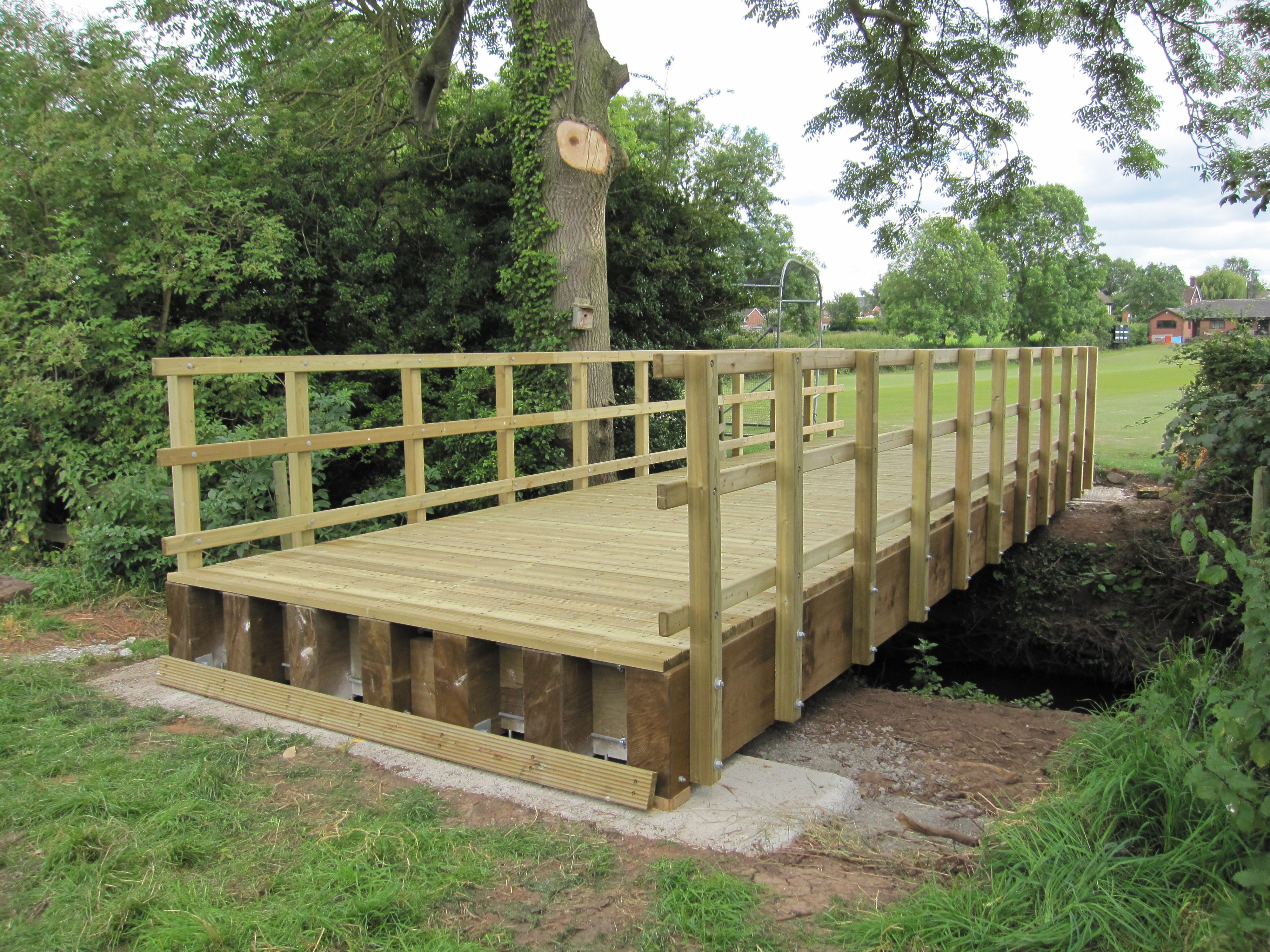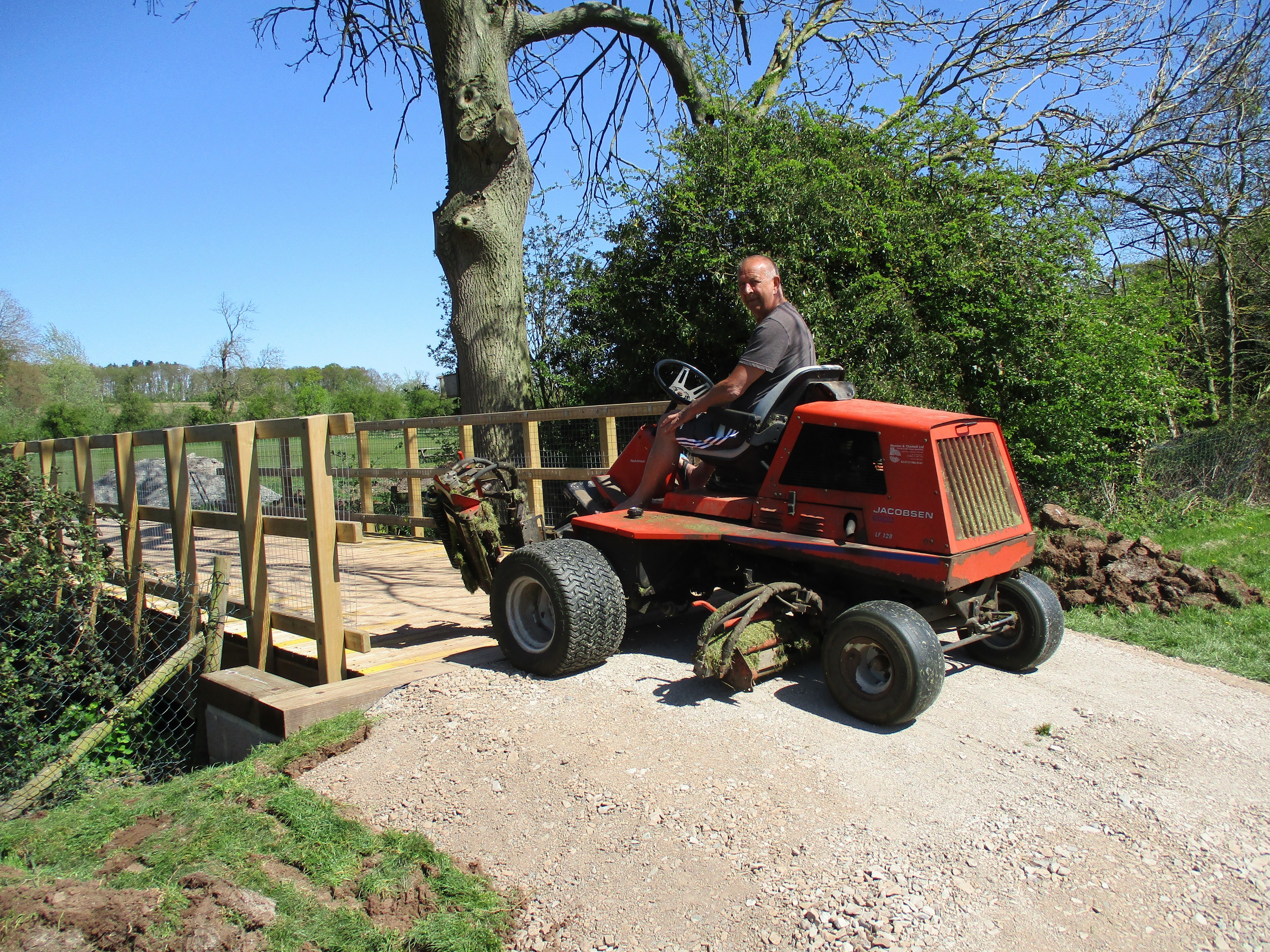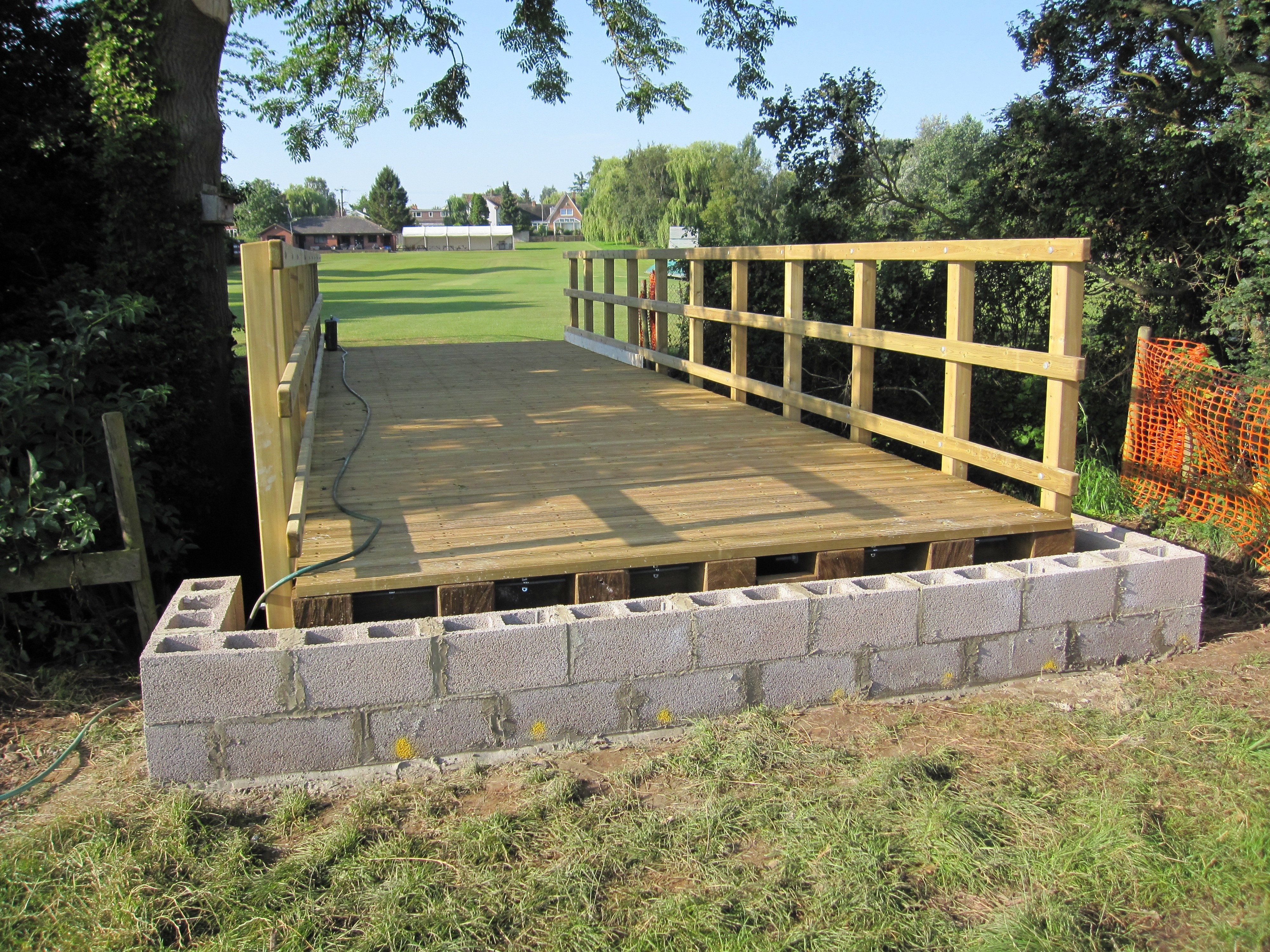On many bridges the walking surface is above ground level. In order to make bridges accessible to all users and wheeled traffic ramps are desirable.

Ramps can be supplied in the same material as the bridge. This is attractive but on some occasions solid ramps are required.
The most cost effective way to provide these is in compacted MoT Type 1 compacted in 300mm layers. It is best to lay this on a geo textile.

When this kind of material is used retaining walls may be required to prevent the fill escaping under the bridge over time.
The retaining walls can be cast at the same time as the foundations but this can be demanding and costly. An alternative is to build the walls with high quality hollow concrete blocks.

It is also desirable not to bury bridges as this may reduce their lives.
The retaining walls which contain the walking area of the ramp are called Ballast Walls and the walls which contain the battered sides are called Wing Walls.
It is a good idea to set steel rebar into holes drilled in the slab and retained with resin anchors. These come up though the holes in the hollow blocks before the holes are filled with good quality concrete. C30 ideally. Make sure the re bars don’t come up to the surface as they may create trips or puncture tyres.
The sides of the ramp may need to be sloped to support the ramp. These are often covered in soil and seeded with grass.
This project was run by the members of Long Whatton Cricket Club with our Technical Support– a very economic and satisfying approach. The roller is not always required!